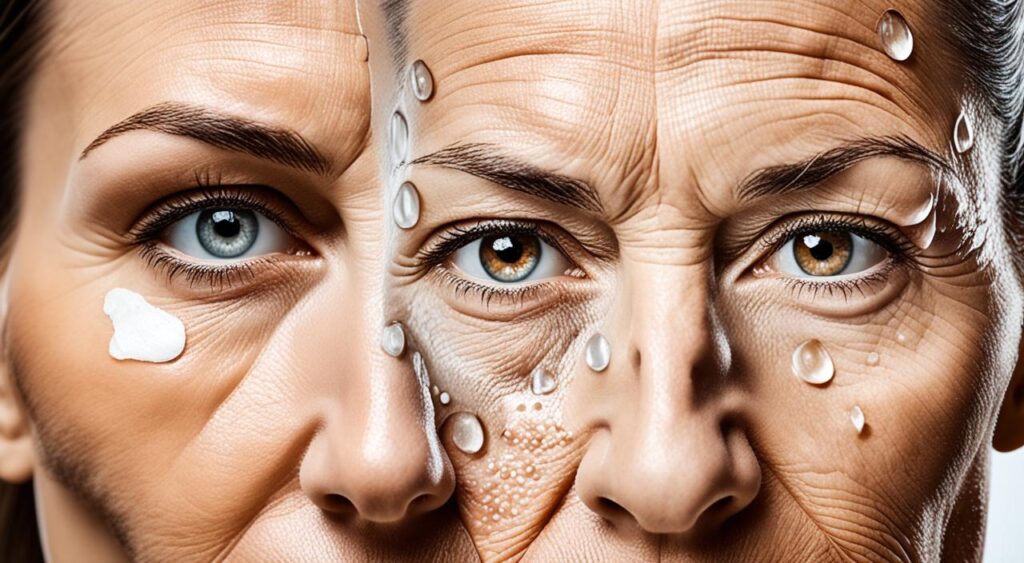Medically reviewed by Dr Chandril Chugh,
Renowned Neurologist and American Trained Specialist
Let’s discuss the advantages of regular physical activity and the health benefits of exercise. In today’s fast-paced world, prioritizing our well-being is of utmost importance. Engaging in regular exercise is one of the most effective ways to improve our overall health and quality of life. By incorporating physical activity into our daily routines, we can experience a multitude of benefits that positively impact our physical and mental well-being.
Table of Contents
TogglePhysical activity has been proven to boost our mood, facilitate weight management, strengthen our muscles and bones, increase our energy levels, reduce the Risk Of Getting Stroke, improve our skin health, enhance brain function and memory, promote relaxation and better sleep, alleviate pain, and even enhance our sex life. Yes, you read that right – exercising regularly can lead to a more satisfying and fulfilling sex life.
These benefits have been extensively supported by studies and research from various credible sources. By engaging in regular physical activity, we can unlock a world of advantages that enhance our overall well-being. We are excited to dive into each benefit in this article and provide you with valuable insights and information to inspire you to prioritize regular exercise in your life.
So, let’s kickstart our journey towards a healthier and happier lifestyle by exploring the many advantages of regular physical activity. Are you ready to discover the full potential of exercise? Let’s get started!
Exercise Can Make You Feel Happier
Regular exercise has a profound impact on Mental Health, specifically the management of mood and emotions. Engaging in physical activity triggers the release of chemicals in the brain that are responsible for regulating mood, such as serotonin and endorphins. These natural hormones act as neurotransmitters and have been linked to feelings of happiness, relaxation, and well-being. By increasing the production of serotonin and endorphins, exercise can help reduce Anxiety And Depression Symptoms.
Studies have shown that even a short duration of exercise, ranging from 10 to 30 minutes, can have a positive impact on mood. Whether it’s a brisk walk, a yoga session, or a high-intensity workout, the act of exercising stimulates the release of these mood-enhancing chemicals, providing an immediate boost in mood and overall mental well-being.
Conversely, a lack of exercise can contribute to feelings of depression and anxiety. Leading a sedentary lifestyle and not engaging in regular physical activity can compromise the production of serotonin and endorphins, which are essential for maintaining a positive mood and emotional balance.
“Exercise not only changes your body, it changes your mind, your attitude, and your mood.”
The Science Behind Exercise and Serotonin
Serotonin, often referred to as the “feel-good” neurotransmitter, plays a crucial role in regulating mood, appetite, and sleep. Exercise increases serotonin levels by increasing the availability of its precursor, tryptophan, in the brain. Tryptophan is an amino acid that is converted into serotonin. Physical activity also improves the sensitivity of serotonin receptors in the brain, enhancing its mood-stabilizing effects.
By incorporating regular exercise into your routine, you can boost serotonin levels, leading to improved mood, increased happiness, and a greater sense of well-being.
| Benefits of Exercise on Mental Health |
|---|
| Reduces symptoms of depression and anxiety |
| Increases production of serotonin and endorphins |
| Improves mood and overall well-being |
| Enhances emotional balance and relaxation |
| Boosts self-esteem and self-confidence |
| Reduces stress and improves resilience |
| Promotes better sleep and higher quality rest |
Exercise Can Help with Weight Management
When it comes to weight management, regular exercise is key. Combining aerobic exercise and resistance training can significantly contribute to achieving and maintaining a healthy weight. Let’s explore the benefits of exercise for weight management and understand how it can help us reach our fitness goals.
Benefits of Exercise for Weight Management
Exercise offers a multitude of benefits when it comes to managing weight:
- Calorie burning: Physical activity helps burn calories, which is essential for weight loss. The more intense the exercise, the more calories are burned.
- Increase in metabolic rate: Regular exercise increases metabolic rate, which means our bodies burn more calories even at rest. This can aid in weight loss and weight maintenance.
- Aerobic exercise and fat loss: Aerobic exercise, such as running, swimming, or cycling, is particularly effective in promoting fat loss. It elevates heart rate and engages large muscle groups, resulting in the utilization of stored body fat for energy.
- Resistance training and muscle maintenance: Including resistance training in our exercise routine helps maintain muscle mass. As we lose weight, there is a risk of losing muscle mass as well. Resistance training helps preserve muscle, supporting overall health and reducing the risk of cardiovascular disease.
The Role of Exercise in Weight Loss and Weight Maintenance
Now, let’s understand how exercise aids in weight loss and weight maintenance:
“Exercise is the key to weight loss because it burns calories, but it’s also important for maintaining weight loss in the long term.”
When we engage in physical activity, our bodies require energy to fuel the exercise. This energy comes from the calories we consume, as well as the stored fat in our bodies. Regular exercise helps create an energy deficit, where the calories burned exceed the calories consumed.
Additionally, exercise helps to build lean muscle mass, which plays a crucial role in maintaining weight loss. Muscle burns more calories than fat, even at rest. By preserving and building muscle through resistance training, we increase our metabolic rate, allowing us to burn more calories throughout the day.
| Exercise Intensity | Activity | Calories Burned per Hour* |
|---|---|---|
| Low | Brisk Walking | 220 |
| Moderate | Cycling | 520 |
| High | Running | 800 |
*Calories burned per hour are approximate values for an individual weighing 155 pounds.
As we can see, the intensity of the exercise directly affects the number of calories burned. Higher intensity activities, such as running, lead to more significant calorie expenditure.
Exercise Is Good for Your Muscles and Bones
When it comes to building and maintaining strong muscles and bones, exercise plays a crucial role. Regular physical activity not only helps prevent muscle loss but also increases bone density, reducing the risk of injuries and conditions like osteoporosis.
Strength-training exercises, such as weightlifting and resistance training, are especially effective in improving muscle strength. These exercises work by challenging the muscles to overcome resistance, leading to increased muscle fiber recruitment and growth. As a result, individuals can experience improvements in muscle strength, endurance, and overall physical performance.
On the other hand, aerobic exercises like running, cycling, and swimming, while beneficial for cardiovascular health, do not provide the same level of impact on muscle strength. However, they can still contribute to overall conditioning and calorie burn.
A balanced exercise routine should incorporate both strength-training and cardiovascular exercises to ensure comprehensive benefits for the muscles and bones.
In addition to muscle strength, exercise also plays a significant role in increasing bone density. Weight-bearing and impact exercises, such as walking, jumping, running, and gymnastics, have been shown to promote higher bone density compared to no-impact sports like swimming and cycling. These exercises subject the bones to the stress of gravity and movements, thus stimulating bone growth and leading to stronger, denser bones.
However, it’s important to note that the benefits of exercise on bone health are most effective when combined with proper nutrition. Adequate calcium and Vitamin D3 Food intake, alongside regular exercise, are key in maintaining optimal bone density.
| Exercise Type | Impact on Muscle Strength | Impact on Bone Density |
|---|---|---|
| Strength-training | Effective in increasing muscle strength | Moderate impact on bone density |
| Aerobic | Improves cardiovascular health, but limited impact on muscle strength | Varies depending on impact level |
| Weight-bearing and impact | Improves muscle strength, especially in the lower body | Promotes higher bone density |
By incorporating a variety of exercises into your fitness routine, you can optimize the benefits for your muscles and bones, ensuring a strong and healthy body.
Exercise Can Increase Your Energy Levels
Engaging in regular exercise can have a significant impact on your energy levels. When you prioritize physical activity, you are not only improving your overall cardiovascular health but also enhancing your body’s ability to deliver oxygen to your muscles. This increased oxygen supply leads to a natural boost in energy that can be felt throughout your day-to-day activities.
Aerobic exercise, in particular, plays a vital role in improving your energy levels. Activities like running, swimming, cycling, or brisk walking get your heart pumping and increase lung capacity. This helps improve lung and heart function, allowing for better circulation and oxygenation of your muscles. As a result, you’ll experience increased endurance and vitality, which can have a positive impact on both your personal and professional life.
Over time, regular exercise can also lead to improved cardiovascular efficiency. Your lung and heart muscles become stronger, allowing them to work more efficiently with less demand. This means that the same amount of physical effort will require less energy, leaving you with more vitality to tackle your day with confidence and enthusiasm.
By incorporating both aerobic exercise and resistance training into your fitness routine, you can maximize the benefits for your energy levels. Along with improved cardiovascular health, resistance training helps build strength and endurance while supporting overall fitness. Additionally, activities like yoga and Pilates can enhance flexibility and promote relaxation, further contributing to your overall well-being and energy levels.
Remember, consistency is key. In order to reap the long-term benefits of exercise on energy levels, it’s important to make physical activity a regular part of your lifestyle. Start by setting achievable goals and gradually increase the duration and intensity of your workouts. As your cardiovascular health improves, so too will your energy levels, allowing you to tackle each day with vigor and vitality.
Exercise Can Reduce Your Risk of Chronic Disease
Regular physical activity plays a crucial role in maintaining good health and preventing chronic diseases. By engaging in exercise, you can significantly reduce the risk of conditions such as type 2 diabetes, heart disease, and certain types of Cancer In Early Stages .
Benefits of Exercise on Chronic Disease Prevention
Exercise offers various benefits that contribute to the prevention of chronic diseases. It helps control blood sugar levels, reducing the risk of type 2 diabetes. Physical activity also helps lower blood pressure, improving overall heart health and reducing the chances of developing heart disease. Additionally, regular exercise aids in managing weight and preventing obesity, which is a significant risk factor for many chronic conditions. Furthermore, exercise has been linked to a lower risk of certain types of cancer, such as colon and breast cancer.
Exercise and Type 2 Diabetes
Type 2 diabetes is a common chronic disease characterized by high blood sugar levels. Engaging in regular exercise can significantly lower the risk of developing this condition. Exercise helps improve insulin sensitivity, allowing your cells to better utilize glucose from the bloodstream. By incorporating physical activity into your daily routine, you can effectively manage blood sugar levels and reduce the risk of type 2 diabetes.
Exercise and Heart Disease
Heart disease is a leading cause of death globally, and adopting an active lifestyle can significantly reduce the risk of developing this condition. Regular exercise promotes heart health by strengthening the heart muscle, improving blood circulation, and lowering blood pressure. It can also help improve cholesterol levels by increasing the levels of high-density lipoprotein (HDL) cholesterol, often referred to as “good” cholesterol. By maintaining a regular exercise regimen, you can protect your heart and reduce the risk of heart disease.
Exercise and Cancer Prevention
Engaging in regular physical activity has been found to have a protective effect against certain types of cancer. Exercise helps regulate hormone levels, improve immune function, decrease inflammation, and enhance the body’s natural antioxidant defenses. These factors contribute to a reduced risk of developing cancer, particularly colon, breast, and endometrial cancer. By incorporating exercise into your lifestyle, you can take proactive steps towards cancer prevention.
Regular exercise is a critical component of a healthy lifestyle and has numerous benefits for preventing chronic diseases. Whether it’s through cardiovascular activities, strength training, or other forms of physical activity, incorporating exercise into your routine can have a profound impact on your overall health and well-being.
Exercise Can Help Skin Health
Regular exercise has been found to have several positive effects on skin health. It can help delay the appearance of skin aging, prevent psoriasis, and improve venous leg ulcers.
Delaying the Appearance of Skin Aging
Exercise plays a crucial role in maintaining youthful-looking skin. It increases blood flow, delivering essential nutrients and oxygen to the skin cells, while also promoting the production of collagen, which is responsible for skin elasticity. Additionally, exercise improves skin tone and texture, giving your complexion a healthy and radiant glow.
Preventing Psoriasis
Psoriasis is a chronic skin condition characterized by red, scaly patches on the skin. Regular exercise has been shown to help manage psoriasis symptoms by reducing inflammation and boosting the immune system. Exercise also helps relieve stress, which can trigger or worsen psoriasis outbreaks.
Improving Venous Leg Ulcers
Venous leg ulcers are open sores that develop on the legs due to poor circulation. Exercise can help improve blood flow and circulation, reducing the risk of developing venous leg ulcers. It also strengthens the leg muscles, which can support healthy blood flow and decrease the severity of existing ulcers.
Skin-friendly Exercise Tips
- Choose low-impact exercises, such as swimming or cycling, to minimize skin irritation.
- Protect your skin from harmful UV rays by wearing sunscreen and appropriate clothing during outdoor workouts.
- Stay hydrated before, during, and after exercise to maintain skin moisture and elasticity.
- Take a shower or clean your skin promptly after exercising to remove sweat, dirt, and bacteria that can clog your pores.

By incorporating regular exercise into your routine, you can reap the benefits of healthier and more vibrant skin. Remember to consult with a healthcare professional before starting any new exercise program, especially if you have pre-existing skin conditions or concerns.
Exercise Can Help Your Brain Health and Memory
Exercise is not just beneficial for the body, but also for the brain. It has been proven to improve brain function, protect memory, and reduce the risk of conditions like Alzheimer’s disease and dementia.
When we exercise, blood flow and oxygen delivery to the brain increase, promoting the growth of new brain cells and strengthening connections between them. This enhances cognitive function and improves memory retention and recall.
This is particularly important for older adults, as exercise can help maintain brain health and prevent cognitive decline that often comes with aging. Studies have shown that regular physical activity can slow down the progression of Alzheimer’s disease and delay the onset of dementia.
To reap these benefits, it’s recommended that older adults engage in a combination of aerobic exercise and strength training. Aerobic exercise, such as walking, swimming, or cycling, increases heart rate and oxygen flow to the brain. Strength training, on the other hand, helps build muscle mass and improves overall brain function.
Incorporating regular exercise into your daily routine can have a significant impact on your brain health and memory. Whether it’s going for a brisk walk, attending a fitness class, or doing strength training exercises, every little bit counts.
So, let’s prioritize physical activity to not only improve our physical well-being but also safeguard the health of our brains.
Exercise Can Help with Relaxation and Sleep Quality
Regular exercise offers numerous benefits beyond physical health. One of the remarkable advantages is its positive impact on relaxation and sleep quality. Engaging in physical activity can significantly improve your ability to unwind, foster a sense of calm, and promote better sleep patterns.
The benefits of exercise on relaxation are multi-fold. First, exercise triggers the release of endorphins, commonly known as “feel-good” hormones, which help reduce stress and promote a sense of well-being. As you engage in exercise, you can experience a natural mood elevation and a greater sense of relaxation.
Additionally, exercise aids in stress reduction by providing an outlet for built-up tension and anxiety. Physical activity acts as a powerful stress reliever, allowing you to clear your mind and focus on the present moment. Whether it’s a brisk walk, yoga session, or a workout in the gym, exercise can serve as a valuable tool for managing and reducing stress in your life.
Another significant benefit of Natural Remedies for Better Sleep Quality. Exercise has been shown to enhance the restorative processes that occur during sleep, resulting in more restful nights and increased feelings of rejuvenation. By incorporating physical activity into your routine, you can fall asleep faster and enjoy longer periods of deep sleep, enhancing your overall sleep quality.
However, it’s important to note that the timing of exercise plays a crucial role in its impact on sleep. It’s advisable to avoid exercising close to bedtime, as the increase in heart rate and stimulation can make it challenging to fall asleep immediately. It’s generally recommended to complete your workout at least 2-3 hours before bedtime to allow your body time to wind down.
Incorporating exercise into your daily routine can provide long-lasting benefits for relaxation and sleep quality. Whether it’s a morning jog, a mid-day yoga session, or an evening workout, finding a time that works best for you is key. By prioritizing physical activity, you can experience improved relaxation, reduced stress, and better sleep, resulting in overall enhanced well-being.
Exercise Can Reduce Pain
Regular physical activity has been found to be an effective natural treatment option for chronic pain. By engaging in exercise, individuals can experience pain relief and an overall improvement in their quality of life.
Exercise can play a crucial role in increasing pain tolerance and managing pain associated with various conditions, including low back pain, fibromyalgia, and chronic soft tissue shoulder disorder. It helps alleviate discomfort by enhancing muscle strength, flexibility, and overall physical function.
Studies have shown that exercise releases endorphins, which are natural painkillers produced by the body. These endorphins not only help reduce pain perception but also promote feelings of well-being and positivity.
“Moving your body through exercise is like medicine for managing ongoing pain. It helps make your body and mind feel better, giving you a complete way to ease pain.” – Dr. Chandril Chugh
Regular physical activity also promotes improved circulation and oxygen flow throughout the body, which aids in reducing inflammation and promoting faster healing. It can prevent muscle imbalances and weaknesses, which often contribute to chronic pain conditions.
Below is a table highlighting the specific benefits of exercise in managing different types of chronic pain:
Remember, it is important to consult with a healthcare professional or a qualified exercise specialist before starting any exercise program, especially if you have chronic pain. They can guide you in choosing appropriate exercises and designing a personalized plan that suits your specific needs and limitations.

Exercise is a powerful tool in managing chronic pain. By incorporating regular physical activity into your routine, you can experience significant pain relief, improved physical function, and enhanced overall well-being.
Conclusion
Incorporating regular physical activity into our daily routines has numerous Benefits of Regular Exercise on Health and well-being. Exercise not only improves our mood and helps with weight management, but also strengthens our muscles and bones, boosts our energy levels, and reduces the risk of chronic diseases. Additionally, exercise enhances brain function, promotes relaxation and better sleep, alleviates pain, and even improves sexual satisfaction.
By making exercise a regular part of our lives, we can experience long-lasting positive effects on our quality of life and overall health. Engaging in physical activities such as walking, jogging, swimming, or participating in fitness classes can have a significant impact on our physical and mental well-being. It is a proactive step towards achieving a healthier and happier lifestyle.
So, let us prioritize regular physical activity and reap the numerous advantages it offers. By taking care of our bodies through exercise, we can enjoy improved mood, better physical fitness, and a reduced risk of chronic diseases. Let’s make physical activity a daily habit and invest in our health and well-being.
FAQ
What are the advantages of regular physical activity?
Regular exercise has numerous advantages for your physical and mental well-being. It can boost your mood, help with weight management, strengthen muscles and bones, increase energy levels, reduce the risk of chronic diseases, improve skin health, enhance brain function and memory, promote relaxation and better sleep, alleviate pain, and even enhance your sex life.
How does exercise affect mood?
Exercise has been shown to improve mood by increasing the production of serotonin and endorphins, hormones that help reduce feelings of depression and anxiety. Even just 10-30 minutes of exercise can have a positive impact on mood. On the other hand, a lack of exercise has been linked to an increase in symptoms of depression and anxiety.
Can exercise help with weight management?
Regular exercise, especially a combination of aerobic exercise and resistance training, can aid in weight management. Physical activity helps burn calories and increase metabolic rate, leading to weight loss. It also helps in maintaining muscle mass, which is important for overall health and reducing the risk of cardiovascular disease.
How does exercise benefit muscles and bones?
Exercise plays a crucial role in building and maintaining strong muscles and bones. It helps prevent muscle loss and increase bone density, reducing the risk of injuries and conditions like osteoporosis. Impact exercises, such as running and gymnastics, have been shown to promote higher bone density compared to no-impact sports like swimming and cycling.
Does exercise increase energy levels?
Engaging in regular exercise can boost energy levels by improving cardiovascular health. Exercise helps improve lung and heart function, leading to better oxygen delivery to the muscles and increased energy. Over time, regular exercise results in less demand on the lungs and improved efficiency of the cardiovascular system.
Can exercise reduce the risk of chronic diseases?
Regular physical activity is a key factor in reducing the risk of chronic diseases like type 2 diabetes, heart disease, and certain types of cancer. Exercise helps control blood sugar levels, lowers blood pressure, improves cholesterol levels, and reduces the risk of obesity, all of which contribute to chronic disease prevention.
How does exercise impact skin health?
Regular exercise has been found to help delay the appearance of skin aging, prevent psoriasis, and improve venous leg ulcers. While intense exercise may contribute to oxidative stress, regular moderate exercise can alleviate stress caused by free radicals and improve overall skin health.
Does exercise benefit brain health and memory?
Exercise has been shown to improve brain function, protect memory, and reduce the risk of conditions like Alzheimer’s disease and dementia. Physical activity increases blood flow and oxygen to the brain, stimulates the growth of brain cells, and helps maintain brain health, especially in older adults.
Can exercise help with relaxation and sleep quality?
Regular exercise can improve sleep quality by promoting better restorative processes during sleep and helping to regulate body temperature. Physical activity also helps with relaxation and stress reduction, leading to better sleep. However, it’s important not to exercise too close to bedtime, as it can interfere with falling asleep.
How does exercise reduce pain?
Exercise has been found to be an effective natural treatment option for chronic pain. It increases pain tolerance and helps control pain associated with conditions like low back pain, fibromyalgia, and chronic soft tissue shoulder disorder. Regular physical activity can alleviate pain and improve quality of life.
What are the overall benefits of exercise for health and well-being?
Regular physical activity offers a wide range of advantages for overall health and well-being. It improves mood, helps with weight management, strengthens muscles and bones, boosts energy levels, reduces the risk of chronic diseases, enhances brain function, promotes relaxation and better sleep, alleviates pain, and improves sexual satisfaction. Incorporating exercise into daily routines can have long-lasting positive effects on quality of life and overall health.

This article is medically reviewed by Dr. Chandril Chugh, Board-Certified Neurologist, providing expert insights and reliable health information.
Dr. Chandril Chugh is a U.S.-trained neurologist with over a decade of experience. Known for his compassionate care, he specializes in treating neurological conditions such as migraines, epilepsy, and Parkinson’s disease. Dr. Chugh is highly regarded for his patient-centered approach and dedication to providing personalized care.








